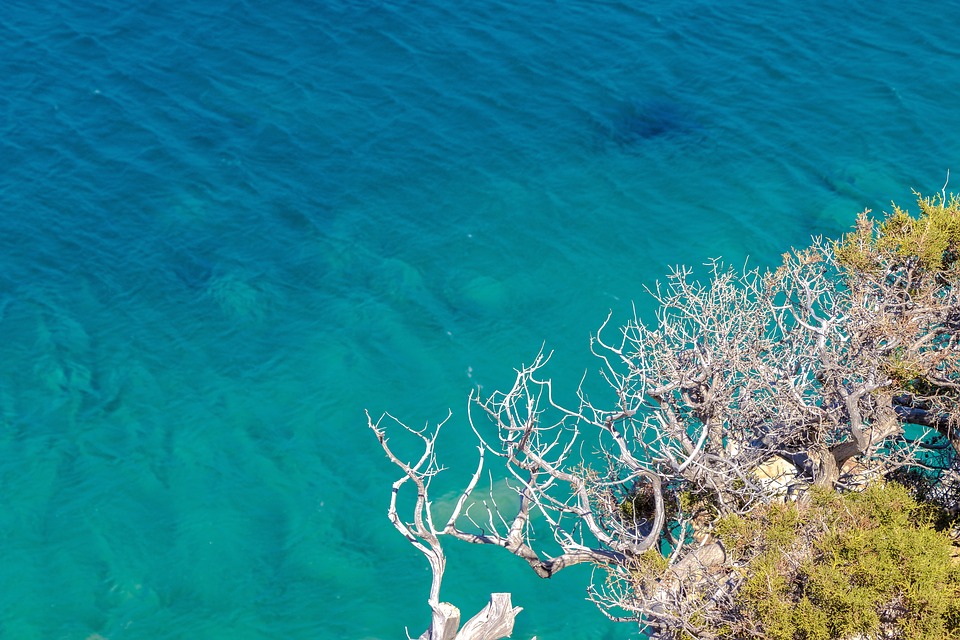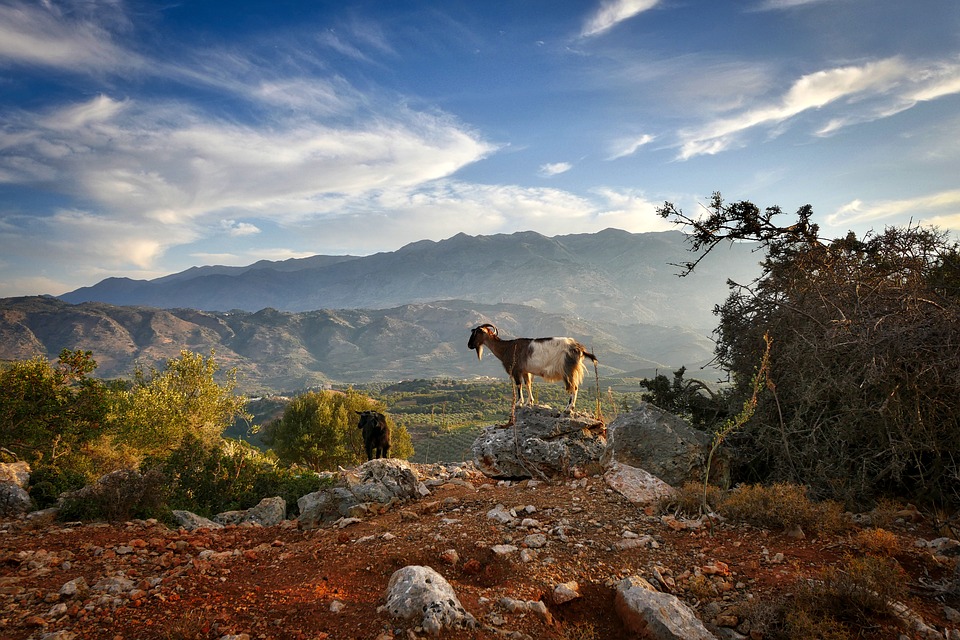Crete is the largest of the Greek islands; 257 km long, 65 km broad at its broadest, only 12 km at its narrowest nearby Irepetra. Crete has a terrific history and features in the accounts of the Minoans, Romans, Byzantines, Venetians, Ottomans, Saracens, and latterly in the stories/reports of WW2. Crete was finally accompanied Greece in December 1913.
Crete has been blessed with mountains and canyons, plateaux and shorelines which use the brave visitor the extensive range of activities for which Crete is well known. The south coast delights in considerably more sunshine and higher temperatures than the north due to the fact that it falls within the North African weather zone. In southern Crete, keep an eye out for the swallows, which stay all year- round, and fruits typically associated with Africa such as the date palm.

The South East of the island boasts the very best beaches in all of Crete. The town resort of Makrigialos is ideally place to make it possible for visitors to check out the historical, cultural and natural charms and treasures of the area.
Makrigialos, as it is most frequently composed, (other spellings are - Makriyialos, Makry-Gialos, Makrygialos) is a typical relaxing Cretan village on the south coast of Crete, 70km from the bustling traveler areas of Aghios Nikolaos and Elounda and far gotten rid of from the busy tempo of Malia. Makrigialos is ideal for those who wish to slow the rate and start to enjoy life once again, ideal for couples and households. It has among the very best beaches in Eastern Crete and is among the quieter, less developed destinations on the island.
Makrigialos nestles in its own bay, 30 minutes drive from Ierapetra. The drive along the coastline is dotted with unaffected towns and remote bays. Makrigialso itself is a lively yet unaffected normal Greek town boasting some fine stores and tavernas. The walk along the beach and promenade, from one end of the town to the small attractive fishing harbour at the other, passes a number of waterside tavernas and dining establishments which front the long beach. The long sandy beach (blue flag) offers safe shallow bathing versus a backdrop of olive groves, rolling hills and granite mountains.
The city is rich in natural, historic, and cultural treasures, from mild gorge strolls to remote coves, from Minoan and Venetian ruins to ageless Cretan towns boasting regional tavernas serving traditional cuisine - all simply waiting to be discovered.
Within the towns of Makrigialos and neighbouring Analipsi there are a number of archaeological sites. The remains of a Roman Rental property sitting above the harbour and the Minoan Rental property, the remains of a coastal settlement of the Agios Stephanos community, are within simple walking range from the centre of the town.
Makrigialos hosts the yearly Casa dei Mezzo Music Festival which this year will take place from Thursday 23rd - Tuesday 28th June 2011. Musicians from worldwide take part in this distinct festival offering the highest of international requirements.

The appeal of Greece's biggest island is hard to equal with its magnificent scenery and fertile mountainsides supplying secluded and awesome vistas. In the area there are a number of gorgeous canyons for strolling. Take a brief walk up the protected valley gorge of Aspro Potamos inland from Makrigialos; The Butterfly canyon, a 4.5 km walk from Koutsouras which takes in wonderful landscapes and small waterfalls along the route; Pefki gorge between the town of Pefki and Makrigialos but don't forget to go to the Folklore Museum of Pefki while you are there, and Pervolakia make a pig of a 3.5 km walk which begins with the abbey Kapsa, and is one of the most outstanding canyons in the location, hosting a number of unusual plants and wildlife. The walk ends at the town of Pervolakia. Look out for households of goats wandering around the gorge. If you prefer to have a guide then there are organised walks the location from both Pefki and Agios Stefanos.
The greatest peak is Afendis Stavromenos 1500 metres (4.500 feet) 11 miles from Makrigialos and can only be reached by strolling or in a 4 X 4. You can delight in memorable and stunning views of Eastern Crete, Aghios Nikolaos, Elounda, Ierapetra and the surrounding islands of Chrissi and Koufonisi, depending on the exposure. On this windswept peak is the little chapel of Jesus Cross together with a bigger room built for the celebration of the church's banquet day on 14th September. In winter season the peak is covered with snow.
Further afield there are a variety of places of interest to visit. Sitiaon the North Coast is the main town of East Crete. It is a very lovely town with a really enjoyable sea front lined with cafs and tavernas, a harbour, and if you elegant the walk up the hill there is the Roman Fort. If you are checking out in August then don't miss out on the raisin celebration.
Ierepetra- thirty minutes from Makrigialos, the only large town on the south coast, has the longest beach on Crete, a museum and the remains of a Venetian fort on the quay. The Turkish profession of 1647 can still be seen near the harbour. The remains of a Turkish water fountain can be discovered in front of a run-down mosque.
The Island of Spinalongalies off the coast, near Elounda Bay. best beaches in crete It consists of a Venetian fort however is probably more well-known as a leper colony. From 1903 until the early 1950's it was house to the lepers of Crete. 'The Island' by Victoria Hislop informs of the history of the island and the story of one female's discovery of her family torn apart by tragedy, war and passion and how she is intimately connected with the island.

The Greek Island of Crete has so many qualities that make it a truly captivating location to visit. Aside from a superb landscape and captivating natural sites, it also has a terrific culinary heritage and charming seaside towns.
Crete's beaches is likewise among the reasons that people attempt to make their way to the island's shores. Since there are lots of lovely sandy stretches you can discover here, it is actually tough to figure out which ones the best. Despite this claim, the Red Beach in Crete handles to come out as one of the most distinct and demanded beaches on the island.
Red Beach got its name from its distinct red sand, thought to have actually been formed from the rocks in the area. This quality alone separates Red Beach from its fellow beaches. The red sand offers a striking contrast to the gleaming blue-green color of the sea. But the reddish shade is not the only thing that is special about it; as it is likewise an extremely recognized nudist beach. In fact, Red Beach is thought about to be one of the best nudist beaches on the planet by established news agencies like Yahoo Travel.
Something that makes Red Beach a truly effective naked beach is its remote location. Instead of just accidentally stumbling upon it, people deliberately make their method to this beach to remove their clothes and their worries, and enjoy all of what the beach has to offer.
You can discover Red Beach on the southern coast of Crete. To reach it, you can choose to take boat from Matala harbor or hike from Matala town. The hiking path is clearly marked by a trail, which begins on the northern part of Matala and takes you throughout a hill. Take a minute to enjoy the seaside view from the hill, as it assures to be spectacular! Likewise note that the beginning of the trail needs you to climb over some rocks so enjoy your action. On the final stretch of the journey, you will require to descend a steep cliff. The whole walking can take around 25 minutes.
Red Beach is generally breezy due to the fact that of the western winds blowing to this part of Crete. This red sandy stretch began to become a popular area for hippies during the 1960's and 1970's. The nudists tend to hang out more on its northern area, which is safeguarded from plain sight by a long rocky limestone. Around this limestone are sculpted rocks, which represent ancient Minoan and Egyptian sea creatures. These sculptures were developed by a Belgian traveler called Gerard. Since then, these artworks have become sort of iconic figures for the beach.

